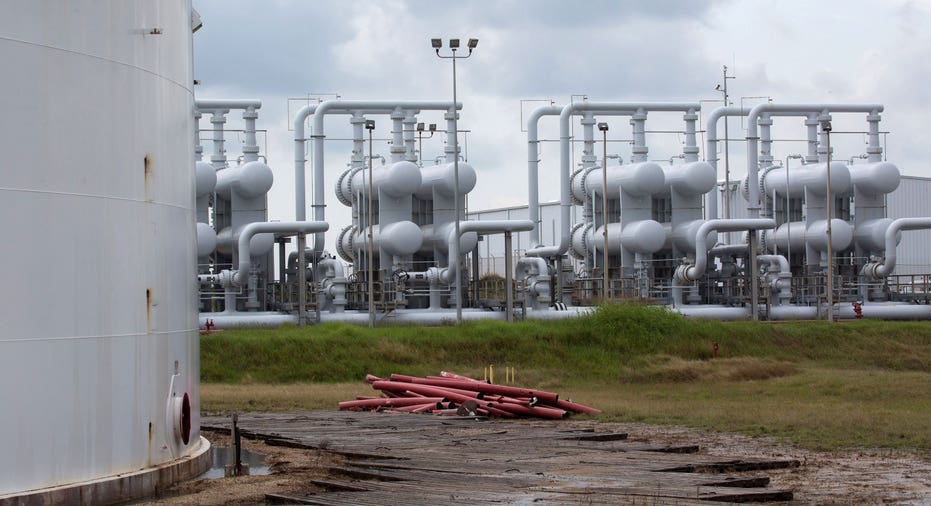Oil Prices Rise on Expected Decline in Supply

Oil prices edged higher Tuesday as coming cutbacks from some of the world's biggest producers keep supporting the market when trading is light because of the holidays.
Light, sweet crude for January delivery settled up 11 cents, or 0.2%, at $52.23 a barrel on the New York Mercantile Exchange. The January contract expired at settlement. The more actively traded February contract gained 24 cents, or 0.5%, to $53.30 a barrel. Brent, the global benchmark, gained 43 cents, or 0.8%, to $55.35 a barrel on ICE Futures Europe. Both benchmarks finished up in seven of the last nine sessions.
The Organization of the Petroleum Exporting Countries agreed last month to cut output by 1.2 million barrels a day, equivalent to around 1% of global supply. A group of big oil producers outside the cartel, including Russia, agreed to join them and scale back their output by another 558,000 barrels a day.
Now output increases expected from Libya -- which had been exempted from the OPEC deal -- are at risk. Country officials said Sunday that the National Oil Co. has stopped the relaunch of production at oil fields in the country's west after a militia threatened to block the petroleum from reaching the market.
That makes oil's next $4 move more likely to be up than down, Jim Ritterbusch, president of energy-advisory firm Ritterbusch Associates, said in a note. He forecast U.S. crude above $56 and Brent at $59 by early January, though a lull in trading from the holidays will likely keep it between $51 and $53 this week, he added.
"The entire complex will remain much more responsive to minor bullish headlines than to occasional bearish items," he said.
Mike Wittner at Société Générale SA said Tuesday that prices are likely to stay just above $50 a barrel through the first three months of next year, but that after that, they are likely to move toward $60 by the end of 2017.
"Before the OPEC agreement, the supply and demand outlook had gone from bullish to neutral," he wrote. "With the OPEC agreement, the global rebalancing has been brought forward again," to the second half of 2017.
Many expect the holiday season to keep news sparse and trading light in the days to come, and other trends could keep prices calm for weeks. OPEC doesn't plan to initiate production cuts until next month, and traders are likely to wait to see how well they follow through. That leaves oil prices likely stuck around $50 until early next year, and then likely higher once traders see inventory levels fall, according to many analysts.
Bjarne Schieldrop from the Stockholm-based SEB bank said in a note that higher prices were inevitable, but that the reaction would be a strong inflow of new U.S. shale oil rigs in the first half of 2017.
Mr. Schieldrop added that global oil inventories would continue to be elevated in the first half of next year. He said that a period of backwardation, a term that describes the situation when the future price of a commodity is cheaper than the current price, would force around 300 million barrels of oil onto the market.
Meanwhile, European oil demand was up by 190,000 barrels a day year over year in October with peripheral Europe up by 300,000 barrels a day, which canceled out some declines from within the European Union, according to a note published by the London-based Energy Aspects.
The think tank also said that an uptick of Saudi gas production is also driving down Middle East oil demand, which fell by 190,000 to 6.35 million barrels a day year over year in October. Saudi Arabia was responsible for almost all of that, falling by a hefty 170,000 barrels a day.
The American Petroleum Institute will release its U.S. crude stock inventory figures for last week later Tuesday. This will be followed by the official data from the Energy Information Administration on Wednesday.
Crude stockpiles likely fell last week, according to The Wall Street Journal's survey of 13 analysts and traders. Their consensus average forecast is for crude stockpiles to fall by 2.3 million barrels. They also forecast gasoline stockpiles to grow by 1.7 million barrels and stockpiles of distillates, which include heating oil and diesel, to fall by 900,000 barrels.
Gasoline futures rose 2.97 cents, or 1.9%, to $1.5639 a gallon, its fourth-straight winning session and longest winning streak since September. Diesel futures lost 0.2 cent, or 0.01%, to $1.6688 a gallon.



















